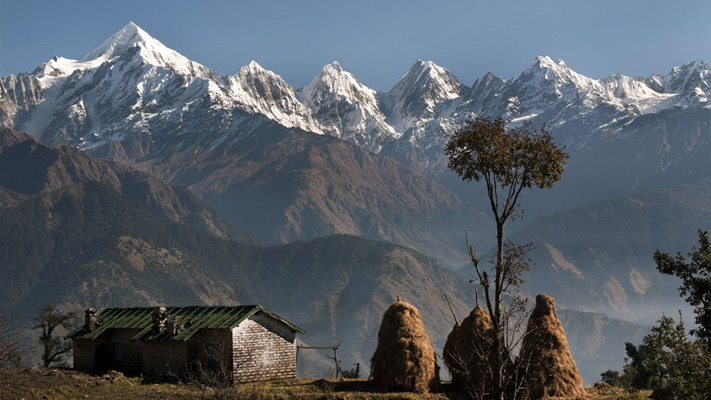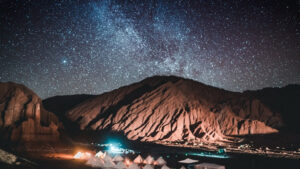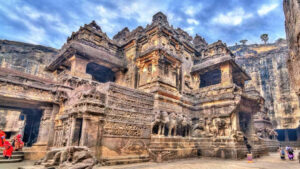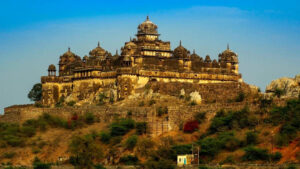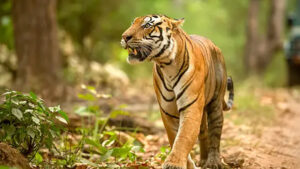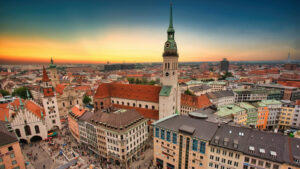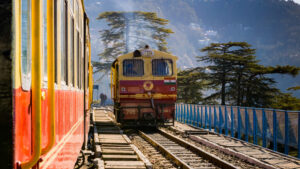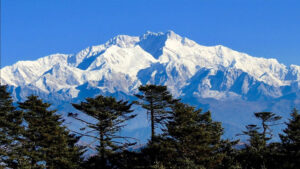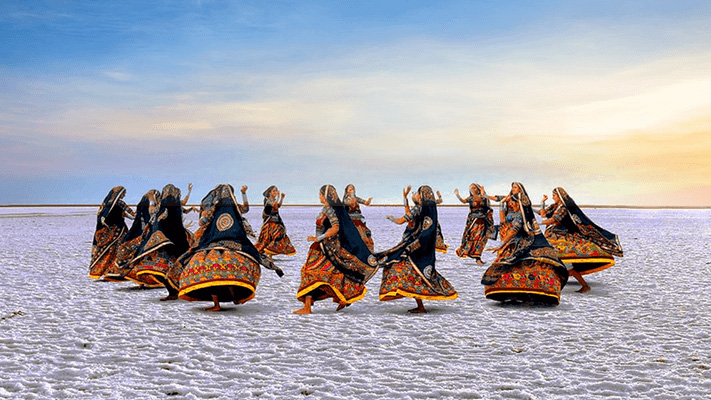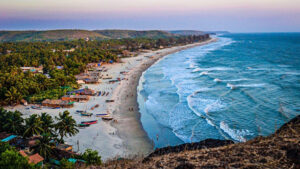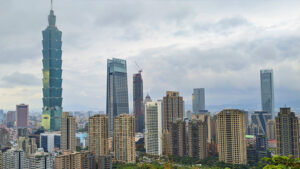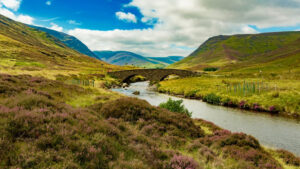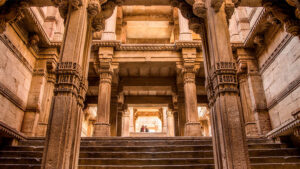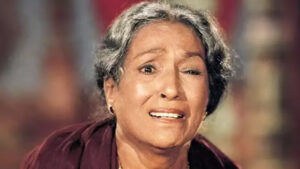MUNSIYARI, UTTARAKHAND – A JOURNEY OF DISCOVERY AMIDST MAJESTIC PEAKS

Nestled in the majestic Kumaon Himalayas of Uttarakhand, Munsiyari stands as a captivating destination that beckons adventure seekers and nature enthusiasts alike. This scenic hill station, known as the “Little Kashmir,” offers a mesmerizing escape into the realm of snow-capped peaks, lush valleys, and untouched natural beauty. From the awe-inspiring views of Nanda Devi and Panchchuli peaks to the exhilarating treks through alpine meadows and glacial trails, Munsiyari presents a paradise for those seeking serenity and outdoor exploration. Immerse yourself in the rich biodiversity, witness cascading waterfalls, and experience the warm hospitality of the local Johari community. Whether you are an avid trekker, nature lover, or simply yearning for a tranquil mountain getaway, Munsiyari promises an unforgettable journey into the heart of the Himalayas.

Overview
- Himalayan Views: Munsiyari is known for its panoramic views of several majestic peaks, including Nanda Devi, Nanda Kot, Panchchuli, and Rajrambha. The town serves as the gateway to the Johar Valley, offering stunning vistas of the surrounding Himalayan range.
- Trekking Paradise: Munsiyari is a popular destination for trekkers and adventure enthusiasts. It serves as the base for various trekking routes, including the Milam Glacier Trek, Ralam Glacier Trek, and the Nanda Devi Base Camp Trek. These treks take you through picturesque landscapes, alpine meadows, and remote villages.
- Breathtaking Waterfalls: Munsiyari is home to several picturesque waterfalls that add to its natural beauty. Birthi Falls, located around 35 kilometers from Munsiyari, is a popular attraction known for its cascading waters amidst lush greenery.
- Maheshwari Kund: Located within Munsiyari, Maheshwari Kund is a sacred lake surrounded by scenic beauty. It is believed to be a source of natural water for the town and is considered a holy spot by locals.
- Rich Biodiversity: Munsiyari is part of the Biodiversity Heritage Site of the Johar Valley, which is known for its diverse flora and fauna. The region is home to rare Himalayan species such as snow leopards, musk deer, monal pheasants, and several varieties of alpine flowers.
- Cultural Heritage: The local culture of Munsiyari is predominantly influenced by the Johari community, who are known for their distinct traditions and hospitality. The region celebrates various festivals, including Dussehra, Makar Sankranti, and Khantauli, which provide a glimpse into the local customs and rituals.
- Adventure Sports: Munsiyari offers opportunities for adventure sports like skiing, snowboarding, and mountaineering during the winter season. It is also a great place for nature walks, birdwatching, and camping amidst the serene Himalayan surroundings.
Experiences and Activities Enjoyed by Visitors
Visitors to Munsiyari can immerse themselves in a range of experiences and activities that showcase the natural

- Trekking: Munsiyari serves as a gateway to some of the most captivating treks in the Himalayas. Embark on treks like the Milam Glacier Trek, Ralam Glacier Trek, and the Nanda Devi Base Camp Trek, which take you through scenic trails, lush forests, and picturesque villages.
- Mountain Views: Munsiyari offers breathtaking views of snow-capped Himalayan peaks, including Nanda Devi, Panchchuli, and Nanda Kot. Witnessing these majestic mountains during sunrise and sunset is a truly awe-inspiring experience.
- Waterfalls and Lakes: Munsiyari is adorned with picturesque waterfalls like Birthi Falls and Thamari Kund. These cascading waters amidst the lush greenery create a serene atmosphere. You can also visit Maheshwari Kund, a sacred lake nestled within Munsiyari.
- Bird-watching and Wildlife: Munsiyari is home to a diverse range of bird species, making it a paradise for bird-watching enthusiasts. The region is also known for its wildlife, including the elusive snow leopard, musk deer, and monal pheasants. Keep your eyes peeled for these fascinating creatures.
- Cultural Immersion: Interact with the friendly locals, particularly the Johari community, and learn about their rich cultural heritage. Experience local festivals, taste traditional cuisine, and witness traditional dances and music performances to get a glimpse of the vibrant local culture.
- Adventure Sports: Munsiyari provides adventure enthusiasts with opportunities for skiing, snowboarding, and mountaineering during the winter season. The region’s challenging terrain and snowy slopes make it an ideal destination for thrilling winter sports.
- Village Exploration: Explore nearby villages like Darkot, where you can witness traditional weaving techniques and purchase locally-made woolen shawls and handicrafts. Engage with the villagers, get insights into their way of life, and experience the simplicity and charm of rural living.
Top Attractions and Must Visit Places
Munsiyari and its surrounding areas are blessed with natural beauty and captivating attractions. Here are some top attractions and must-visit places in and around Munsiyari:

- Khaliya Top: A popular trekking destination, Khaliya Top offers breathtaking panoramic views of the snow-capped Himalayan peaks. The trek takes you through scenic forests, meadows, and streams, culminating in stunning vistas that make it a must-visit spot for nature enthusiasts.
- Birthi Falls: Located near Munsiyari, Birthi Falls is a picturesque waterfall cascading from a height of 126 meters. The sight of water gushing down amidst lush greenery creates a serene and captivating atmosphere.
- Thamari Kund: Thamari Kund is a natural lake situated at the base of the Panchchuli Peaks. Surrounded by scenic landscapes and snow-clad mountains, it offers a peaceful retreat for nature lovers and a perfect spot for photography.
- Darkot Village: Pay a visit to Darkot Village, known for its traditional weaving and craftsmanship. The village is famous for its woolen shawls and handicrafts created by skilled artisans. Interact with the locals and learn about their unique way of life.
- Madkot Hot Springs: Located around 22 kilometers from Munsiyari, Madkot is known for its natural hot springs. Take a dip in the rejuvenating hot water, known for its therapeutic properties, and relax amidst the tranquil surroundings.
- Nanda Devi Temple: Situated in the heart of Munsiyari, the Nanda Devi Temple is a revered shrine dedicated to Goddess Nanda Devi. It holds religious significance for the locals and offers a glimpse into the region’s spiritual and cultural beliefs.
- Panchchuli Peaks: The majestic Panchchuli Peaks, with their five distinct peaks, are a prominent attraction near Munsiyari. These snow-covered mountains offer a mesmerizing sight, especially during sunrise and sunset, and are a paradise for photographers.
- Tribal Heritage Museum: Visit the Tribal Heritage Museum in Munsiyari to learn about the culture, traditions, and lifestyle of the local tribes. The museum showcases artifacts, handicrafts, and historical exhibits that provide insights into the region’s tribal heritage.
Best Time to Visit
The best time to visit Munsiyari is during the summer and autumn months, from April to November. Here’s a breakdown of the seasons to help you plan your visit:
- Summer (April to June): Summer is the most pleasant season in Munsiyari, with mild temperatures ranging from 15°C to 25°C (59°F to 77°F). The weather is ideal for outdoor activities like trekking, nature walks, and exploring the surrounding areas. The skies are clear, offering stunning views of the Himalayan peaks. It is the peak tourist season, so expect more crowds during this time.
- Monsoon (July to September): Munsiyari receives moderate to heavy rainfall during the monsoon season. While the surrounding landscapes become lush and green, trekking and outdoor activities may be limited due to the possibility of landslides and difficult trail conditions. It is advisable to check weather and road conditions before planning a visit during this time.
- Autumn (October to November): Autumn is another favorable time to visit Munsiyari. The weather remains pleasant, with temperatures ranging from 10°C to 20°C (50°F to 68°F). The monsoon rain recedes, leaving behind fresh and vibrant landscapes. The autumn foliage adds a touch of beauty to the surroundings, making it a great time for photography and enjoying the natural beauty of the region.

How to Reach
Reaching Munsiyari involves traveling through various modes of transportation. Here are the common routes to reach Munsiyari:
By Air: The nearest airport to Munsiyari is Pantnagar Airport, located approximately 275 kilometers away. From Pantnagar, you can hire a taxi or take a shared cab to Munsiyari. The drive takes around 9-10 hours, passing through Almora and Kausani.
By Train: The nearest major railway station to Munsiyari is Kathgodam Railway Station, located approximately 275 kilometers away. From Kathgodam, you can hire a taxi or take a shared cab to Munsiyari. The road journey takes around 9-10 hours, passing through Almora and Kausani.
By Road: Munsiyari is well-connected by road, and regular bus services operate from major nearby cities. Buses and shared taxis are available from cities like Almora, Kathgodam, and Haldwani. The road journey to Munsiyari offers scenic views of the Himalayan landscapes.
It is important to note that the road conditions in the hilly terrain can be challenging, especially during monsoon and winter seasons. It is advisable to check weather conditions and road conditions before planning your trip and consider hiring a skilled driver familiar with the mountainous roads.


